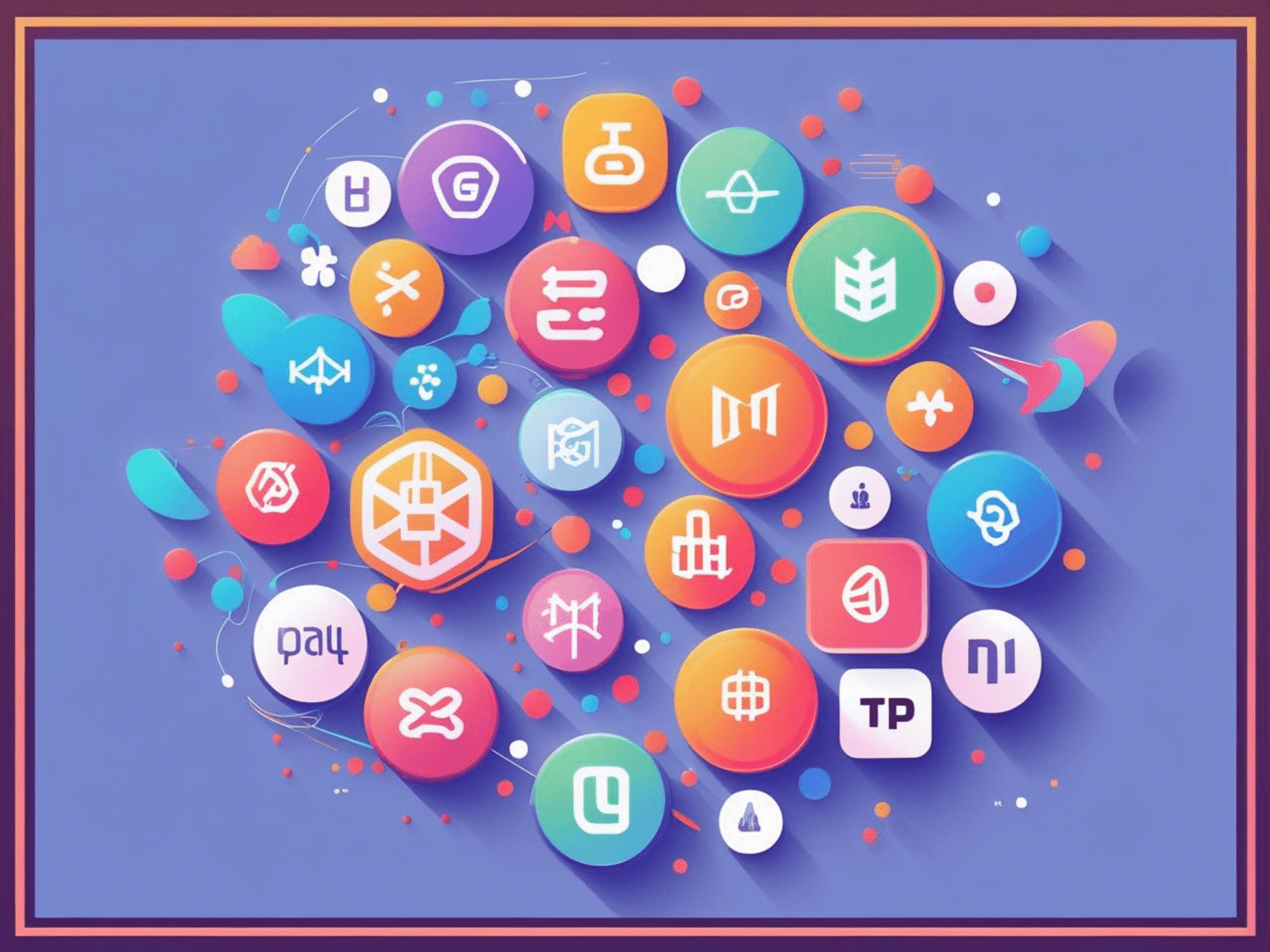Table of Contents
ToggleIntroduction
Programming languages are the backbone of modern computing. They serve as the medium through which humans communicate instructions to machines, enabling the development of software, applications, and systems that power our digital world. Over the decades, programming languages have evolved significantly, reflecting advances in technology, changes in programming paradigms, and the growing complexity of problems that computers are expected to solve.
Early Beginnings: Machine and Assembly Languages
The journey of programming languages began in the mid-20th century. The earliest computers were programmed directly in machine language, which consists of binary code (0s and 1s). While powerful, this approach was extremely tedious and error-prone.
To simplify this, assembly languages were developed. These used mnemonic codes (like ADD, MOV, or JMP) to represent machine instructions. Though still low-level and hardware-specific, assembly made programming slightly more human-friendly and manageable.
The Birth of High-Level Languages
By the 1950s, the need for more abstract and user-friendly programming methods gave rise to high-level languages (HLLs). These languages allowed programmers to write instructions closer to human language and mathematics rather than hardware instructions.
FORTRAN (1957) – The first widely used HLL, designed for scientific and mathematical computations.
COBOL (1959) – Created for business applications, emphasizing readability and data processing.
LISP (1958) – Known for its use in artificial intelligence research, focusing on symbolic computation.
These languages abstracted away hardware details, making software development more accessible and less error-prone.
The Structured Programming Era
During the 1960s and 70s, programming grew in complexity, which led to the rise of structured programming. The focus shifted toward writing clearer, more organized, and modular code.
ALGOL introduced structured control statements, influencing many later languages.
C (1972) emerged as a powerful and flexible language, balancing efficiency with high-level features. It became the foundation for operating systems, compilers, and embedded systems.
Pascal emphasized teaching structured programming principles and strong data typing.
This era helped establish software engineering as a discipline, promoting maintainability and reliability.
Object-Oriented Revolution
In the 1980s and 90s, as software systems became larger, a new paradigm—object-oriented programming (OOP)—took center stage. OOP focused on organizing code into reusable units called objects, combining data and behavior.
Smalltalk pioneered OOP concepts.
C++ (1985) extended C with classes and OOP features, becoming widely used in system and application software.
Java (1995) brought platform independence with its “write once, run anywhere” philosophy, dominating enterprise applications and web development.
This paradigm shift made programming more scalable, modular, and reusable.
The Rise of Scripting and Dynamic Languages
By the late 1990s and early 2000s, the Internet boom fueled demand for rapid development and web-based applications. This gave rise to scripting and dynamic languages.
JavaScript became the backbone of client-side web programming.
Python, with its simplicity and readability, grew popular in education, scientific computing, and later, AI and data science.
PHP and Ruby powered dynamic web applications and frameworks.
These languages emphasized developer productivity, flexibility, and fast prototyping.
Modern Trends: Multiparadigm and Domain-Specific Languages
Today, programming languages continue to evolve to meet diverse needs:
Multiparadigm languages like Python, Scala, and Rust support multiple styles (procedural, functional, OOP), giving developers flexibility.
Functional programming languages (Haskell, Elixir, F#) emphasize immutability and higher-order functions, gaining traction in parallel and distributed computing.
Domain-specific languages (DSLs) like SQL (databases), R (statistics), and MATLAB (engineering) target specialized fields.
Kotlin, Swift, and Go represent modern, safe, and efficient languages designed for mobile, system, and concurrent programming.
The Future of Programming Languages
The evolution is ongoing. Emerging languages are focusing on safety, concurrency, performance, and AI integration. With trends like low-code/no-code platforms, natural language programming, and AI-assisted coding, the boundary between human thought and machine execution is narrowing.
Future languages may blend human language with machine precision, making programming more intuitive and inclusive.
Conclusion
The evolution of programming languages reflects the story of computing itself—moving from raw machine instructions to high-level, human-centered abstractions. Each generation of languages has brought new paradigms, addressing the limitations of its predecessors while opening doors to fresh possibilities. As technology continues to advance, programming languages will remain at the heart of innovation, shaping how humans and machines interact.
C++ : Modern Programming Language
C++ is one of the most powerful, versatile, and widely used programming languages in the world. Since its creation by Bjarne Stroustrup in the early 1980s, C++ has played a pivotal role in shaping the field of software development. Often called the “middle-level language,” C++ combines the efficiency and control of low-level programming with the flexibility and abstraction of high-level programming, making it an ideal choice for building robust and scalable applications.
Evolution of C++
C++ originated as an extension of the C programming language, adding the concept of object-oriented programming (OOP). Its primary goal was to provide developers with tools to structure code more effectively while retaining the performance of C. Over the years, multiple standards of C++ have been released, including C++98, C++11, C++14, C++17, C++20, and the upcoming C++23, each introducing new features like smart pointers, concurrency support, and ranges.
Key Features of C++
Object-Oriented Programming (OOP)
C++ supports encapsulation, inheritance, polymorphism, and abstraction, allowing developers to design modular and reusable code.
High Performance
Like C, C++ offers direct access to memory through pointers, enabling developers to write highly efficient and fast programs.
Rich Standard Library
The Standard Template Library (STL) provides a collection of pre-built data structures (like vectors, stacks, queues) and algorithms, which saves time and effort.
Portability
Programs written in C++ can be compiled and run on multiple platforms with little or no modification.
Flexibility
C++ supports multiple programming paradigms, including procedural, object-oriented, and generic programming.
Applications of C++
C++ remains at the core of many modern technologies because of its speed, efficiency, and reliability. Some key areas where C++ is widely used are:
System Software: Operating systems like Windows, macOS, and parts of Linux are written in C++.
Game Development: Popular game engines such as Unreal Engine rely heavily on C++ due to its ability to handle graphics, performance, and real-time computing.
Embedded Systems: Devices like smartwatches, cars, and medical instruments use C++ for firmware and hardware-level control.
Finance and Trading: High-frequency trading platforms and banking systems use C++ for real-time transaction processing.
Scientific Computing: Simulation software, mathematical models, and data analysis tools are often implemented in C++.
Advantages of C++
Faster execution compared to many modern languages.
Strong memory management capabilities.
Large community and vast resources for learning.
Backward compatibility with C.
Challenges in C++
Despite its strengths, C++ can be complex for beginners. Manual memory management, syntax intricacies, and debugging challenges often make it less beginner-friendly compared to languages like Python or JavaScript. However, once mastered, C++ offers unmatched control over hardware and system resources.
Future of C++
Even with the rise of modern languages, C++ continues to evolve and remain relevant. With every new standard, it integrates contemporary programming practices while maintaining performance and compatibility. Its role in artificial intelligence, machine learning, gaming, blockchain, and high-performance applications ensures that C++ will continue to be a cornerstone of programming for decades to come.
Conclusion
C++ is not just a programming language—it is the foundation of many technologies that power our modern digital world. From operating systems to video games, from financial software to embedded systems, C++ continues to dominate in performance-critical applications. For aspiring programmers and professionals alike, learning C++ provides a deep understanding of how computers work while opening doors to a wide range of career opportunities.
Java : Programming Language
When it comes to programming languages that have stood the test of time, Java holds a unique position. Introduced by Sun Microsystems in 1995 (now owned by Oracle Corporation), Java has become one of the most widely used, versatile, and reliable programming languages in the world. Its principle of “Write Once, Run Anywhere (WORA)” made it revolutionary in its time, and even today, it continues to power applications ranging from mobile apps to enterprise systems.
What is Java?
Java is a high-level, object-oriented programming language designed with simplicity, portability, and performance in mind. Unlike low-level languages that require detailed memory management, Java handles these complexities internally, allowing developers to focus on building robust and scalable software.
Java programs are compiled into bytecode, which runs on the Java Virtual Machine (JVM). This architecture makes Java platform-independent — a single program can run on Windows, Linux, or macOS without modification, provided the system has JVM installed.
Key Features of Java
Platform Independence
Thanks to JVM, Java code runs seamlessly across different operating systems.
Object-Oriented
Java organizes code into reusable objects, making software modular, maintainable, and scalable.
Robust and Secure
Features like garbage collection, exception handling, and strong memory management make Java reliable. Its built-in security manager also protects against malicious code.
Multithreading
Java supports concurrent execution of tasks, enabling efficient use of CPU resources in modern systems.
Rich Standard Library
Java provides extensive libraries (APIs) for networking, database access, GUI development, cryptography, and more.
Community Support
With millions of developers worldwide, Java has a strong community, vast resources, and frameworks.
Where is Java Used?
Java’s versatility makes it suitable for a wide range of applications:
Enterprise Applications
Most large-scale corporate systems (like banking and finance applications) use Java frameworks such as Spring and Hibernate.
Android Development
Java has been the backbone of Android app development for years.
Web Development
Java powers dynamic web applications via technologies like JSP (JavaServer Pages) and Servlets.
Big Data
Tools like Hadoop and Apache Spark use Java.
Cloud Computing & IoT
Java is preferred for building scalable cloud-based applications and IoT solutions.
Advantages of Learning Java
High Demand in Industry
Java developers are always in demand due to the language’s widespread adoption.
Strong Foundation
Learning Java gives beginners a solid understanding of object-oriented programming, which helps in learning other languages.
Cross-Platform Flexibility
Applications written in Java run almost everywhere.
Vast Ecosystem
Numerous frameworks, libraries, and tools are available for faster development.
Future of Java
Even after three decades, Java remains relevant. With continuous updates (latest being Java 21 in 2023), the language is evolving with modern trends like functional programming features, records, pattern matching, and cloud-native support.
The rise of newer languages hasn’t diminished Java’s dominance — instead, it continues to be the backbone of enterprise applications, Android apps, and large-scale systems.
Conclusion
Java’s longevity is a testament to its strength, reliability, and adaptability. Whether you are a beginner entering the world of programming or an experienced developer building large-scale systems, Java remains a language worth mastering. With its rich ecosystem, strong community, and constant evolution, Java is not just a programming language — it’s a technology powerhouse that continues to shape the digital world.
JavaScript: The Language of the Web
In the digital age, programming languages form the backbone of every website, app, and software tool we use daily. Among these, JavaScript (JS) stands out as one of the most influential and widely used languages, often referred to as the “language of the web.” From simple web page interactions to complex applications, JavaScript powers much of today’s online experience.
What is JavaScript?
JavaScript is a high-level, interpreted programming language that was first developed in 1995 by Brendan Eich while working at Netscape. Initially designed to add interactive features to static websites, it has since grown into a powerful, versatile language used across multiple platforms. Unlike HTML (which structures web content) and CSS (which styles it), JavaScript brings websites to life by enabling dynamic behavior.
Key Features of JavaScript
Versatility – JavaScript can be used for client-side (front-end) development and server-side (back-end) development using environments like Node.js.
Interactivity – It allows developers to create interactive elements such as forms, sliders, animations, and games.
Event-Driven Programming – JavaScript responds to user actions like clicks, key presses, and mouse movements.
Object-Oriented – While not purely object-oriented, JavaScript supports objects, inheritance, and encapsulation.
Asynchronous Capabilities – With features like callbacks, promises, and async/await, JavaScript efficiently handles tasks like API calls and real-time data fetching.
Why JavaScript is Important
Front-End Development: Along with HTML and CSS, JavaScript forms the core of front-end web development. Frameworks such as React, Angular, and Vue.js are built on JavaScript, helping developers build modern, responsive user interfaces.
Back-End Development: With the advent of Node.js, JavaScript expanded to server-side programming, allowing developers to use a single language for full-stack development.
Mobile & Desktop Applications: Frameworks like React Native, Ionic, and Electron allow developers to build cross-platform apps using JavaScript.
Wide Community Support: JavaScript has one of the largest developer communities, making it easier to find resources, libraries, and tools.
Popular Applications of JavaScript
Interactive Websites – Sliders, pop-ups, real-time updates, and navigation menus.
Single Page Applications (SPAs) – Platforms like Gmail, Twitter, and Netflix rely heavily on JavaScript frameworks.
Game Development – JavaScript is widely used for browser-based games.
Data Visualization – Libraries like D3.js and Chart.js make it possible to create interactive charts and dashboards.
AI & Machine Learning – Tools such as TensorFlow.js allow developers to implement machine learning models directly in the browser.
The Future of JavaScript
JavaScript continues to evolve with new features introduced through ECMAScript (ES) standards. Modern updates, such as ES6 and beyond, have brought powerful improvements like arrow functions, template literals, and modules. With its adaptability, large ecosystem, and strong community support, JavaScript’s future looks brighter than ever, solidifying its place as an essential skill for developers.
Conclusion
From being a simple scripting tool to becoming the foundation of modern web development, JavaScript has transformed the way we interact with technology. Its versatility across front-end, back-end, and even mobile development makes it one of the most valuable programming languages in the world. Whether you are a beginner learning to code or a seasoned developer building complex applications, mastering JavaScript opens endless possibilities in the tech world.



